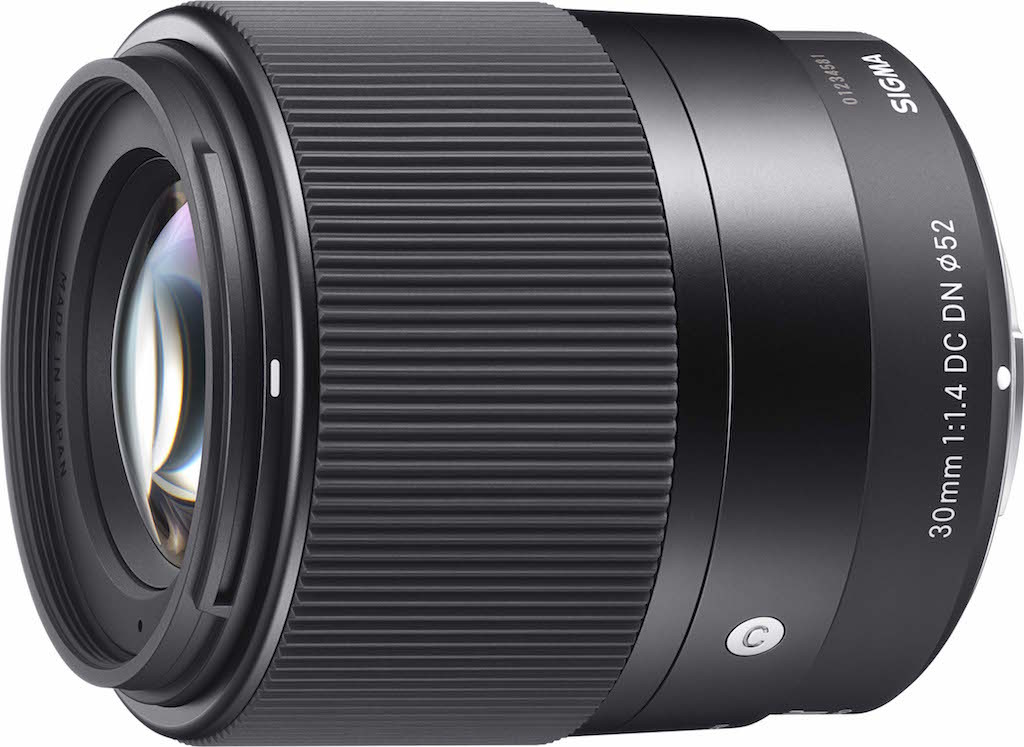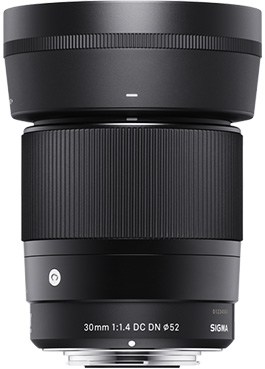There are many users who wish that Sigma would start releasing more lenses for mirrorless cameras, particularly for the 35mm format on the Sony A7 series. While the new 30mm f/1.4 DC DN lens doesn’t respond to the needs of A7 users, it offers a more attractive fast aperture for Sony APS-C and Micro Four Thirds.

The new lens is compact and weighs only 265g. The lens construction features 9 elements in 7 groups with 2 aspherical lenses and 9 rounded diaphragm blades. The front lens features high-refractive and high-dispersion glass.
Part of the Contemporary line, the 30mm f/1.4 gives you the same angle of view as a 45mm (APS-C) or 60mm (m4/3) respectively according to 36×24 equivalence.
Sigma states that this lens delivers image quality that rivals that of their Art series.
Sigma promises a beautiful bokeh and exceptional sharpness with minimised lateral chromatic aberration and flare. Distortion is corrected by the image correction capabilities of the camera body which likely means that there will be a lens profile to do the same in RAW development software programs.

The 30mm f/1.4 DN features an inner focus mechanism. Thanks to the stepping motor it offers smooth performance for video use as well. The lens is compatible with Sony’s Hybrid AF.
The new lens comes with a supplied hood and will be available in March at the price of $340 / £240.

Sigma also announced a very interesting telephoto lens. While it is intended for DSLRs, it could also work well with the upcoming Sony a6300 and its advanced hybrid AF. The new 50-100mm is the first telephoto zoom lens to feature a constant aperture of f/1.8 and is part of the premium Art series.
The lens is made of metal and and Thermally Stable Composite (TSC) which enhances the high precision of the lens construction. It is not weather sealed but features a tripod collar.
The lens provides an equivalent focal length of 75-150mm (35mm format). The design includes FLD glass, SLD glass, and high-refractive index / high-dispersion glass to help minimise aberrations and is designed to reduce flares and ghosting.
It has an inner focus and zoom mechanism. The AF motor is a newly designed Hyper Sonic type which is 30% slimmer than before. The iris diameter is the second-largest in the Sigma line-up after the 200-500mm f/2.8 and 400-1000mm f/5.6 and it provides smoother and quicker operation than ever before. To achieve this, the diaphragm blades include Carbon Feather film and the diaphragm unit features a new polycarbonate made with fluorine which provides extra durability.
The new lens will be available for Sigma, Canon and Nikon mounts and will cost $1100 / £780. The released date hasn’t been specified yet.
